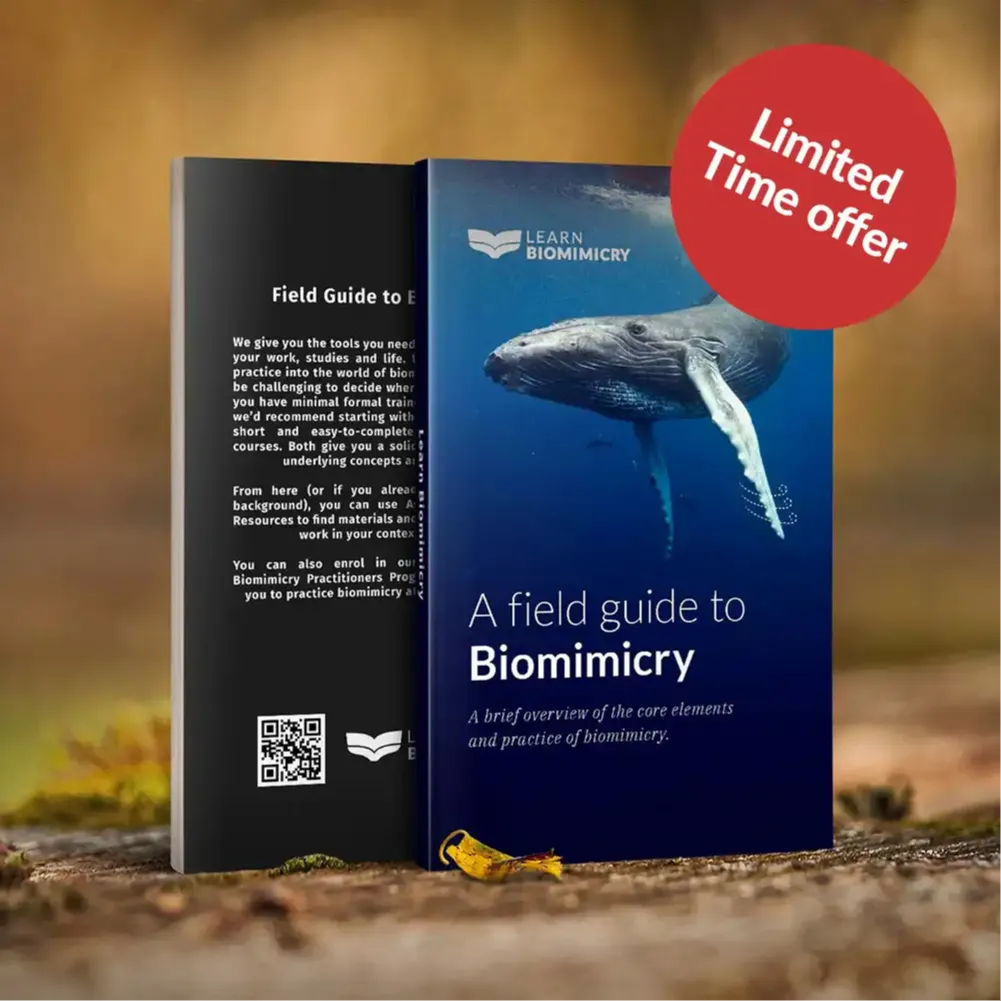Biomimicry and Belonging: The Ethos of Kinship

There’s a quiet revolution unfolding across design, science, and soul work. At the intersection lies biomimicry. And while the word may sound technical, its invitation is profoundly simple.
At the heart, biomimicry asks us to remember: we are not outside of nature. We are nature. Not observers, but participants. Not users, but kin. And this is where the healing starts.
In her seminal book Biomimicry: Innovation Inspired by Nature, Janine Benyus urged a shift: from cleverness to wisdom, from domination to reverence. Since then, innovators have turned to nature, from being inspired by coral reefs for architectural cues to leaves for solar design. The impulse is clear: learn from nature. But learning is not the same as listening.
The Ethos Often Forgotten
Emulating nature’s forms is one thing. Embodying its ethics is another.
Too often, our rush to innovate turns biomimicry into just another act of extraction. Without ethos, biomimicry risks becoming bio-appropriation... a hollow mimicry of brilliance, stripped of belonging.
When it comes to inner strength and mental health, the healing power of biomimicry transcends metaphor. Observing how ecosystems adapt, recover, and regenerate reminds us of our own capacity to do the same.
The spider web illustrates this best. Light as hair, stronger than steel, its genius lies not only in physics but in story. The spider spins not to showcase innovation, but to survive. Its web is both architecture and autobiography. To copy the silk without honoring the spinner is to miss the truth: strength and vulnerability are woven together.
This is where biomimicry transcends innovation. It becomes integration. Not “How can we solve this?” but “Who are we in relationship with?”
We Are Nature, Too
Our dominant modern culture frames nature as an externality - a park to visit, a screen saver to admire. But in truth, nature is intimate. It is in the oxygen threading our lungs, in the minerals coursing through our blood, in the calcium scaffolding our bones.
We are not in nature, or outside of nature. We are nature.
And if we are ecosystems clothed in flesh, healing cannot remain only personal. It becomes planetary. Biomimicry, then, becomes not only a tool for design but a lens for empathy. We need connection. We need memory and movement. This isn’t romanticism, it’s remembrance.
Kinship Before Solution
Life’s Principles - nature’s time-tested strategies - offer more than templates for products; they offer guidance for belonging. For example:
- To adapt to change, we look to the Arctic fox, whose coat shifts with the seasons.
- To incorporate diversity, we turn to coral reefs, where resilience blooms from complexity.
- To be locally attuned and responsive, we study the saguaro cactus, storing water and orienting toward the sun.
- To use life-friendly chemistry, we watch the spider, her silk spun without toxins, without force.
- To integrate development with growth, we observe the pine cone, opening and closing in rhythm with the air.
- To evolve to survive, we remember bacteria: small, persistent, endlessly adaptive.
These are not metaphors. They are mentors. And before we copy their strategies, we must connect with their being.
Kinship precedes solution. Notice the bird before building the drone. Listen to the mycelium before mapping the network. Feel the forest before fixing the world. Attention itself becomes an act of resistance, reminding us that learning begins with reverence.
From Cleverness to Kinship
Nature doesn’t design for ease. She designs for endurance. She doesn’t offer quick fixes, but deep continuity. Biomimicry’s deepest offering isn’t efficiency. It’s a blueprint for healing. A reminder that we, too, are adaptive. When we slow down to honor the spider (not just the silk), and when we ask the forest (not just replicate it) we move from sustainable to sacred.
In the end, biomimicry is not just a method. It is a remembering. Innovation is not only about what we make, but how we belong while making it. Not just sharp minds, but soft hands. Not only better tools, but wiser kin.
This is the shift: from harm reduction to harmony restoration. From speed to sensing. From domination to devotion.
When we embody this wisdom, we heal—not only our systems and our stories, but the very way we walk through the world.
So may we build like fungi: quietly, relationally, through threads of care, trusting that the smallest strands can hold entire ecosystems together.
And may we become the kind of life this Earth has been waiting for.
Lex Amore is a storyteller, regenerative strategist, and founder of Heal with Amore, where she integrates mindfulness, movement, and nature into pathways of personal and systemic healing. She holds a Master of Science in Biomimicry from Arizona State University and has collaborated with hundreds of biomimicry groups and practitioners worldwide, sharing this practice across diverse settings—from youth programs and university classrooms to corporate boardrooms.
If you'd like to dig deeper, her new book: The Resilient Living Systems Playbook is both a philosophical and practical guide for remembering how Life restores itself. Rooted in biomimicry, systems thinking, and embodied ecology, it translates nature’s design intelligence into human experience — helping readers cultivate resilience through rhythm, reciprocity, and relationship.
Are you ready to learn from nature?
Here are 3 ways we can help you on your biomimicry journey:
1. If you're new to biomimicry, download the free eBook: A Field Guide to Biomimicry for an introduction, clear explanations and examples.
2. If you're interested in more, the Biomimicry Short Course set - you can try it for free - will give you a solid understanding of the history of biomimicry, Life's Principles and the design methodologies through videos, handbooks and real-world case studies. (Start with a 7-day free trial).
2. If you're ready to step it up and get practical, the Biomimicry Practitioner Programme is a 6-month, project based course where a hands-on mentor will guide you to apply biomimicry practically through a project.

